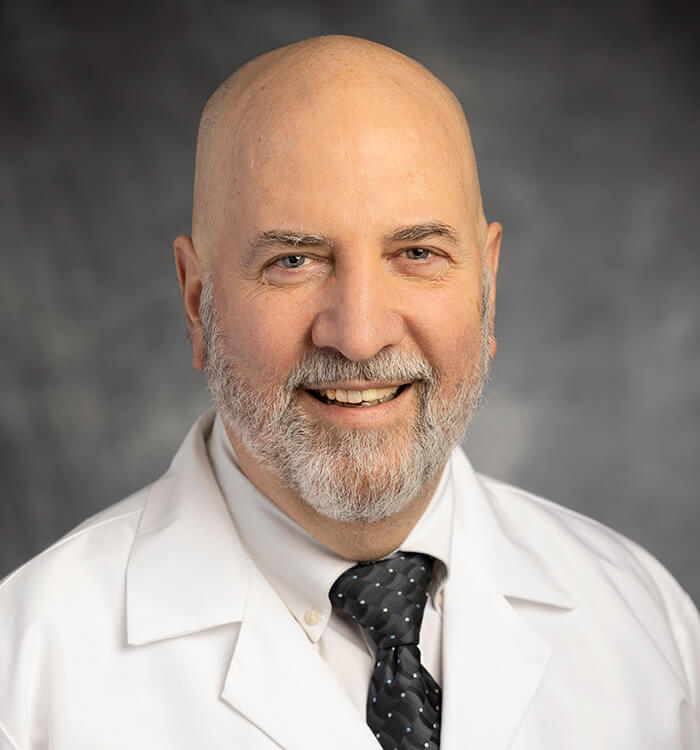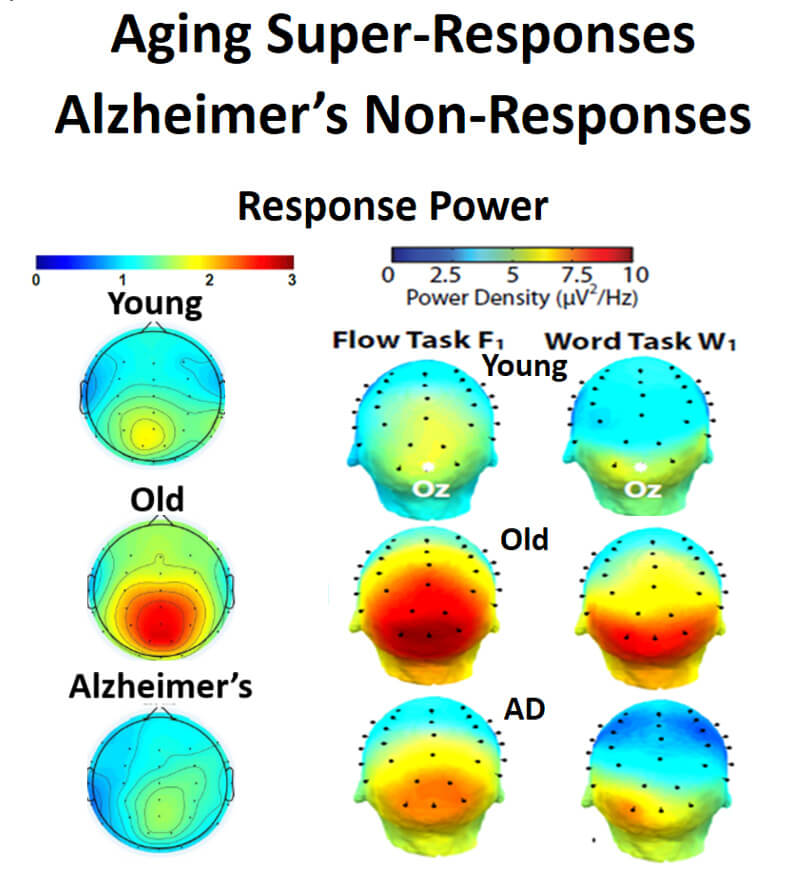An Evolving Understanding of Alzheimer’s Disease
November 21, 2022
Innovations in Neurology & Neurosurgery | Fall 2022
Like static on a transistor radio. That is how esteemed cognitive neurophysiologist Charles J. Duffy, MD, PhD, describes the signals generated within aging brains.
 Charles J. Duffy, MD, Phd
Charles J. Duffy, MD, Phd“It is well-documented that older adults differ from their younger peers by virtue of slower cerebral response,” says Dr. Duffy, Director of the Brain Health & Memory Center within the University Hospitals Neurological Institute. “Our research has found that this slowing is associated with noisier, less reliable brain signals.” As a result, older individuals often report that perceptual tasks require more time or focus than they did in the past.
However, what Dr. Duffy and his team discovered next was stunning — those noisier brain signals were accompanied by a substantial boost in signal power in the patients they studied. Utilizing event-related potential (ERP) recordings, researchers found that the older brains were working measurably harder.
“A crackling radio station is an apt analogy,” he says. “What can you do? Turn up the volume, the signal strength, or shift the antenna as you focus more intently on their ongoing mental activity.”
The surprising finding is that brain power use went up as the synchrony of signal went down. Those findings led to another shocking discovery — as individuals develop Alzheimer’s disease, that powerful signal collapses, and they lose specific cognitive abilities.
 Dr. Duffy’s research on aging and Alzheimer’s disease has shown increased brain power use in aging that precedes the loss of power with the development of impairments in Alzheimer’s disease. Left: Brain response power used in during attention to a visual stimulus. Right: A comparable demonstration of increased power use in aging before power loss and impairment in a motion task (flow) and a reading task (word).
Dr. Duffy’s research on aging and Alzheimer’s disease has shown increased brain power use in aging that precedes the loss of power with the development of impairments in Alzheimer’s disease. Left: Brain response power used in during attention to a visual stimulus. Right: A comparable demonstration of increased power use in aging before power loss and impairment in a motion task (flow) and a reading task (word).Dr. Duffy has devoted the past 30 years to probing the complexity of brain signal processing and its connection to Alzheimer’s disease. As he furthers growth within the Brain Health & Memory Center at University Hospitals Cleveland Medical Center, he is sparking novel understanding of the link between changes in neural activity and mental decline.
“Alzheimer’s disease is the gorilla in the corner of every healthcare visit with older adults,” he says. “It is an enormous problem that is overwhelming individuals, families and healthcare systems around the world.”
To understand the trajectory of Alzheimer’s research, it helps to start with some basic tenets.
- It is readily understood that advanced age (65+) is the No. 1 risk factor for Alzheimer’s disease.
- Though often conflated with endemic Alzheimer’s disease, early onset Alzheimer’s is a distinct diagnosis that accounts for only 1 percent of cases and is likely genetically influenced.
- Adults experiencing healthy cognitive aging produce slower behavioral responses, while Alzheimer’s patients often produce inaccurate responses.
- Problems with language and perceptual processing are fundamental aspects of the early stages of Alzheimer’s disease.
- In contrast to frontotemporal lobe dementia, Alzheimer’s disease affects the back half of the brain, where vision and other sensory modalities are located.
Unanswered Questions
Dr. Duffy and his team continue to develop quantitative methods to measure an individual’s response to a range of visual psychophysical tasks and stimuli. Moving forward, he hopes to expand research to additional neurological processes. For example, will future ERPs demonstrate that patients lose the ability to recognize objects, words and faces simultaneously, or in a sequence, and can that sequence be generalized across a majority of patients?
“When I first entered the field, it was believed that ERPs were normal in Alzheimer’s,” says Dr. Duffy. “Now we understand that these age-related brain changes may contribute to or accelerate the development of Alzheimer’s disease.”
Additionally, he seeks to understand the biological foundations that may be triggering a transition from healthy brain aging to Alzheimer’s disease. Just as high blood pressure forces the heart to work too hard, is this boost in brain signal strength leading to hyperexcitability and, ultimately, neurotoxicity? The hope is to pinpoint the problem in each patient, then direct specific treatments or drug therapies that could stop the progression of brain toxicity.
“We are hunting along a trail to understand the first critical event that leads a person down a path toward Alzheimer’s,” says Dr. Duffy. “The answers to these questions are not going to fall into our laps. We need to be diligent and persistent in stopping this disease.”
For more information, contact Dr. Duffy at Charles.Duffy@UHhospitals.org.
Contributing Expert:
Charles J. Duffy, MD, PhD
Director, Brain Health & Memory Center
University Hospitals Neurological Institute
Professor
Case Western Reserve University School of Medicine


